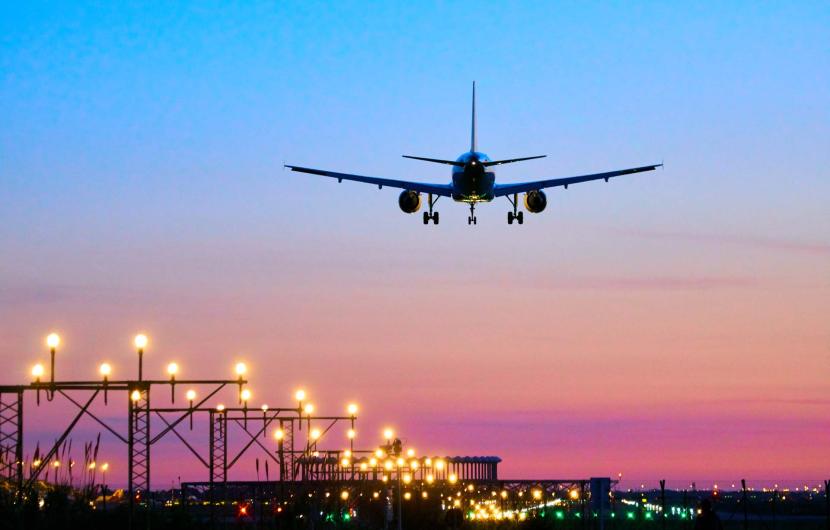Intercontinental passengers at Barcelona Airport grew by 34.2% year-on-year in 2023
22/02/2024 - 10:30h
The OTB publishes the first capsule of the 2023 Barcelona Tourism Activity Report, which gathers data regarding accommodation, tourism demand, and mobility infrastructures of Destination Barcelona.

The Observatory of Tourism in Barcelona: city and region has published the first capsule of the 2023 Barcelona Tourism Activity Report. According to the World Tourism Organization, more than 1.3 billion tourists travelled internationally this year, which meant 88% of pre-pandemic levels worldwide and 94% in Europe.
Strong intra-European and US market demand, together with the reopening of Asian markets internationally, boosted the recovery in tourism activity. However, the continuing conflict between Russia and Ukraine, the energy crisis, inflation, rising interest rates and the outbreak of war in Israel were the main limiting factors.
According to Observatory calculations, in 2023 the city of Barcelona received 15.6 M tourists which, added to the 10.3 M in Barcelona region, resulted in Destination Barcelona receiving almost 26 M tourists. These figures, together with spending on accommodation and expenditure during the stay (food and drink, entertainment, internal transport, shopping, etc.) have made it possible to estimate the economic impact of direct expenditure of tourism activity at a total of 12,750 M euros in the Destination as a whole. This impact is distributed in 9,676 M euros in Barcelona city and 3,074 M euros in Barcelona region. These calculations include, not only those people staying overnight in tourist accommodation, but also those non-resident who slept in other types of accommodation, such as homes of friends and relatives.
The capsule of the report that is presented right below provides the first data on tourist activity at the three geographical levels that the OTB works on: Barcelona city, Barcelona region, and Destination Barcelona. This capsule contains three chapters with data on accommodation, tourism demand, and mobility infrastructures.
Accommodation
Despite the impossibility of applying for new accommodation licences in Barcelona due to the PEUAT, the supply of tourist accommodation in the city grew year-on-year. This was due to the opening of establishments with previously granted licences and some homes for tourist use (HTUs), which had to be registered with at the CCEAT. Thus, the total number of tourist accommodation establishments in the city increased by +4.0% and the number of bed places by +1.6%.
In Barcelona region, the year-on-year increase in the supply of tourist accommodation was even greater (+10.5% in establishments and +4.4% in bed places), also due to a strong growth in HTUs. Despite the new regulation approved by the Generalitat de Catalunya in November, which limits these dwellings, the year closed with 7,500 new bed places in this type of accommodation (+11.6%).
Tourism demand
Demand in tourist accommodation increased again year-on-year in all types of accommodation analysed, reaching the same levels as in 2019, in terms of overnight stays.
In hotels the number of tourists in the destination as a whole exceeded 12 million (+14.9% Var. 23/22) and 32 million overnight stays (+12.7% Var. 23/22). Two thirds of the demand in hotels were recorded in Barcelona city.
Guesthouses and inns, with a year-on-year growth in tourists of +9.1%, recorded a lower average stay, resulting in a lower growth in overnight stays (+0.9% Var. 23/22).
Campsites demand, with more than 3.2 million overnight stays, increased by +9.5% in overnights (Var. 23/22), well above rural tourism establishments, which despite registering more nights than the previous year, experienced more limited growth (+2.5%).
Finally, with data available only for Barcelona city, homes for tourist use generated more than 20 million overnight stays (+15.0% Var. 23/22), which meant 1 out of every 3 nights in the municipality, while youth hostels, almost 2.5 million (+9.0% Var. 23/22).
Mobility infrastructures
The global recovery of air capacity resulted in an increase in both operations (+12.5%) and passenger movements (+19.9%) at Barcelona Airport, which, despite not exceeding pre-pandemic figures (-5.3% Var. 23/19), closed the year with almost 50 M passengers. Particularly noteworthy was the increase in passengers on intercontinental flights (+34.2%), due to the recovery of normality in the air market worldwide.
At Barcelona Port, 803 cruise arrivals and 3,274 ferry arrivals were recorded, carrying more passengers than ever: 3.6M in the first case, and 1.7M, in the second.
As for the rail sector, the city of Barcelona was directly connected by the high-speed train to 9 international and 16 domestic destinations.
More information: Barcelona tourism activity report 2023 - Capsule 1
Share:


